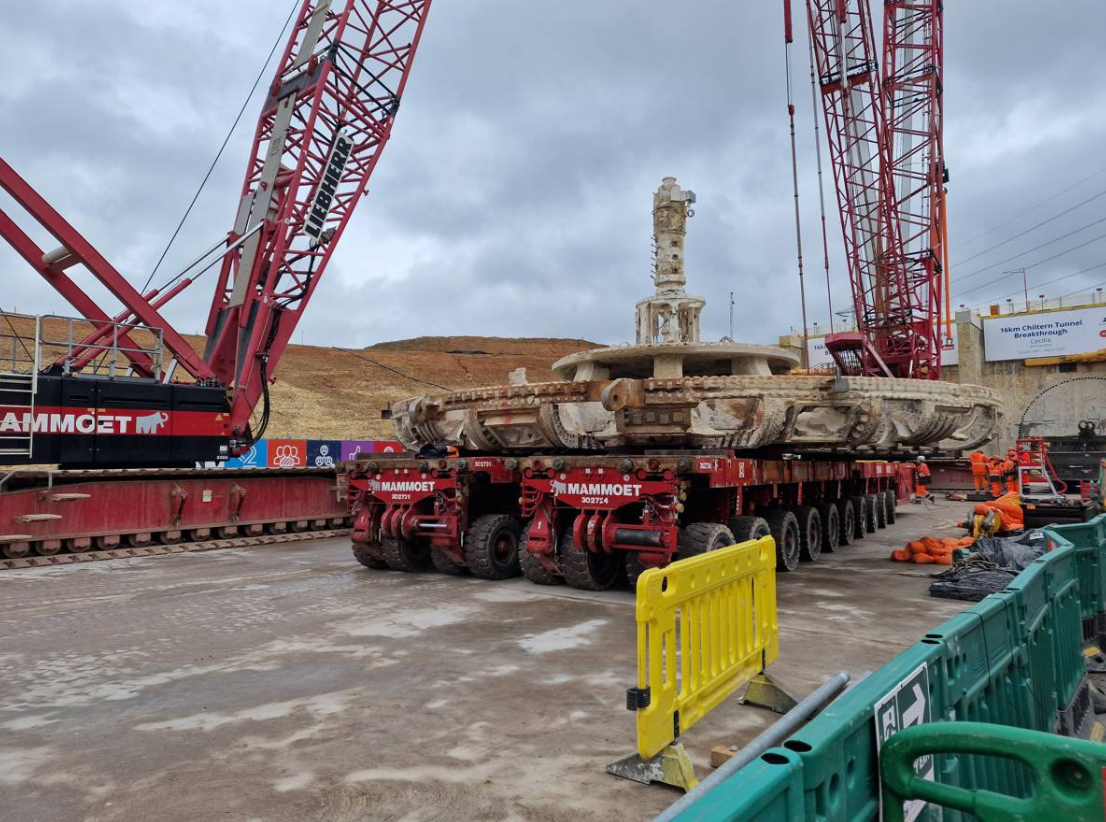
Mammoet has once again showcased its engineering prowess, this time by dismantling the enormous tunnel boring machines (TBMs) used in the UK’s flagship High Speed Two (HS2) transportation project. Connecting the West Midlands and London through 140 miles of high-speed rail, the HS2 project is a massive undertaking, and the TBMs, each measuring 170 meters in length and weighing 2,000 tonnes, played a crucial role in carving out the underground sections.
These colossal machines, akin to mechanical earthworms, burrow through the earth, excavating spoil and erecting segments that form the tunnel walls. The assembly and subsequent dismantling of these machines are complex processes involving thousands of heavy components, each requiring precise handling.

Align JV—a joint venture between Bouygues Travaux Publics, VolkerFitzpatrick, and Sir Robert McAlpine—tasked Mammoet with the assembly of two TBMs for the 16km twin-bore tunnel through the Chiltern Hills as part of HS2 Phase 1. Having successfully completed the assembly at the South Portal, Mammoet was then entrusted with dismantling these machines at the North Portal near Great Missenden after their drives were complete.
Simon Crawley, Mammoet’s Senior Commercial Manager, led the dismantling effort. He met with the team involved in the TBM assembly and visited the North Portal site to assess the specific challenges of the dismantling process, such as site obstructions and available space. “We determined that the equipment used to build the boring machines wasn’t necessarily the equipment needed for their dismantling,” Crawley explained. Due to site constraints, a 400-tonne crawler crane was deemed sufficient, as opposed to the 600-tonne crane used during assembly.
To validate this approach, Crawley collaborated with Mammoet Project Manager Rhys Burley and Project Engineer Antreas Michail to create a detailed visualization using Move3D software, which included a full animation of the complex lifts involved. Align JV, satisfied with Mammoet’s recommendations, approved the use of the smaller, more cost-effective crane.
The dismantling process began with two TBMs needing to be taken apart at the North Portal. Mammoet utilized a 400-tonne capacity crawler crane (CC2400) for the largest components and an LR1300SX crawler crane for the heaviest part, the cutter head, which required a tandem lift. The components were then transported on Mammoet’s Self-Propelled Modular Transporters (SPMTs) to laydown areas.
Additional cranes, including the LR1300SX and an LR1250, were used to offload the components for further dismantling. One of the significant challenges was handling the cutter head, whose center of gravity was not fully known, and performing lifts on a slight incline. Instead of creating new drawings and potentially delaying the project, the team devised an engineering solution using air hoists for pneumatic adjustments, enhancing safety and efficiency.
“This project demonstrates how Mammoet utilized everything in its toolbox—people, equipment, and knowledge—to deliver a safe and efficient outcome for Align,” said Crawley. The project not only highlighted Mammoet’s ability to adapt and find the most efficient solutions but also its capacity to manage large-scale operations with a turnkey package, including all necessary personnel and equipment.
Mammoet’s success in dismantling the HS2 TBMs underscores its position as a leader in heavy lifting and transport, showcasing its ability to meet and exceed project expectations through innovative and adaptable solutions.

